SLHS Upper Avon Navigation




Disclaimer
Whilst some care has been taken to check externally linked websites no responsibility is offered nor implied for the suitability, legality or reliability of content therein.
Statements are made here to the best of our knowledge. However no statement here should be regarded as irrefutable fact. Please contact us if you consider otherwise.
"...this dede done had been a pleasant syght of the vessels coming and makying to Warewick and the countrey and a grate profit to the Lord is in the carriage of there wyns and odre stuff from Bristow by watre, and caused merchands the better willyd to dwell in the town."
Stratford to Leamington
● These items have aspects that uniquely contribute to national or world history.
● First Restored River By IWA
UANT Planned New Extension To Leamington
In 1974 Severn Trent Water Authority considered extending navigation even further upstream in order to join up to the Grand Union Canal at Leamington thus avoiding the current vast numbers of locks. This was a foresighted idea.
The Upper Avon Navigation Trust was formed and with David Hutchings as Chief Architect a magnificently detailed consultation document (costings were elsewhere) was produced.
See Further information below.

To return to Master page click on ‘River Avon’ above.
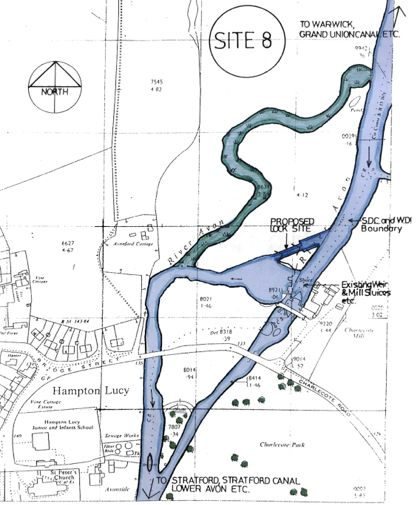
The Earls Of Warwick wielded money and power like few others outside of royalty. No less the Thirteenth Earl, Richard De Beauchamp (1382-1439), whose godfather was King Richard II. He was knighted during the coronation of King Henry IV.
Having won The Battle Of Shrewsbury he was made a Knight Of The Garter. He then became Military Counsellor to Henry V. Henry V's will gave Warwick the responsibility for the education of the infant Henry V. Whilst conducting British affairs he acted as Superintendent of the Trial Of Joan Of Arc and finally became Governor Of Normandy & Calais.
He is buried in his family’s wing of the enormous St Mary’s Church Warwick in the most opulent of mausoleums.
What he said went. During the reign of Henry VI he called that the Avon be made navigable from the River Severn, at Tewkesbury, to Warwick and..
Beauchamp’s Avon Ambitions
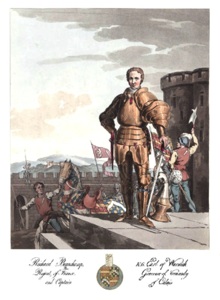
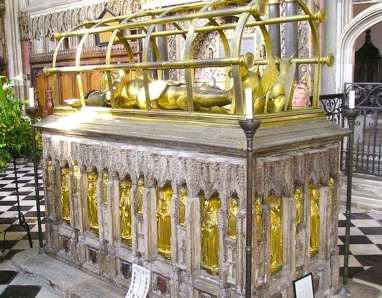
However the Earl's vision remained unrealised for 200 years, untill Charles I in 1635 "sitting in Councell empowered William Sandys of Flatbury to make the River Avon passable for boats of reasonable burthen from Severn (nere Tewxbury) through the Counties of Worcester, Gloucester, and Warwicke unto or near the Citty of Coventry."
By 1639, the navigation was completed to Stratford - an astonishing achievement for the age - eased by the King's appointment of commissioners to deal with difficult landowners, as the project was seen as "advantageous to the publiq".
In 1641, Captain John Taylor reported that the Avon was navigable to within four miles of Warwick. (A road running down to the river in Barford is evidence that there could well have been a wharf there.) In the early 18th century Daniel Defoe reported "many goods carried by water almost to Warwick" and at the passing of the Avon Navigation Act in 1751, about 400 30-ton barges used the river annually.
But Not In Beauchamp’s Lifetime
Nearly all information on this page has been provided by Upper Avon Navigation Trust
Richard De Beauchamp standing proud have won one of his many battles. Duncan 1890. Richard’s Mausoleum in Warwick.
The construction of the Stratford canal, linking with the Birmingham-Worcester canal at Kings Norton, and subsequently with the Grand Union canal at Lapworth, placed Stratford at the fulcrum of a freight transit network. A second basin was dug out with yet more wharves, warehouses to interface with the river. Many thriving industries developed in the town.
William James’ Canal And Tramway Bring More Trade
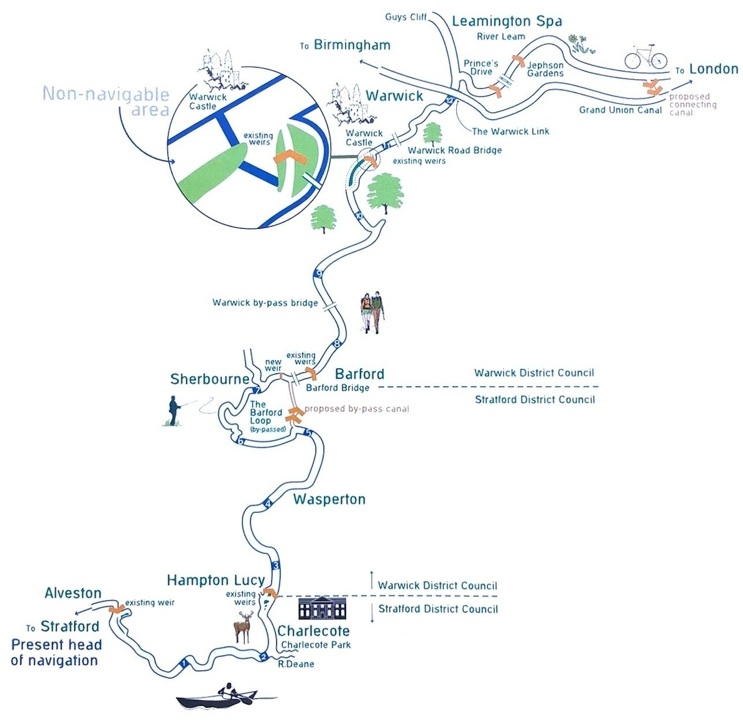
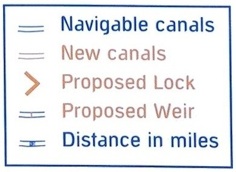
A feasibity study was done which did look rather straightforward and the detailed planning document went out for public consultation. Sadly many along the route, notably Charlecote Park and Warwick Castle, objected vehemently and the plan was withdrawn.
After Fifty Glorious Years
Gradually the river trade declined and through navigation became impossible by the 1870's. Trade on the canal continued, but declined steadily, ending before the second world war. Several attempts were made by local bodies to arrest the decline.
In 1920 the Ministry of Transport produced a scheme to take 100-ton barges from Tewkesbury to Warwick and thence by the Grand Union Canal to the River Thames and London (William James original idea). Although the Grand Union was widened to facilitate this sadly no action took place on the Avon.
Come 1946 the South Stratford Canal lay derelict and the Avon remained barely navigable downstream of Pershore. Navigations were considered unimportant -just historical relics. In 1950 the Inland Waterways Association formed the Lower Avon Navigation Trust which, with Douglas Barwell as Chairman, worked tirelessly for fourteen years to restore the navigation from Tewkesbury to Evesham.
New Planned Extension To Leamington
Proposed Upper Avon Extension from Stratford To Grand Union Canal in Leamington showing planned locks
Typical detailed drawings by David Hutchings
New Planned Extension Did Not Get The “Go Ahead”
Further Information..
-
Consultation Document (view on Dropbox or 17.5Mb download): UANT_Proposed Upper Avon Extension
-
● Full
-
● Partial
-
● None
-
Theatres ●
Last update: 31/10/2024
Created: 14/11/2023
